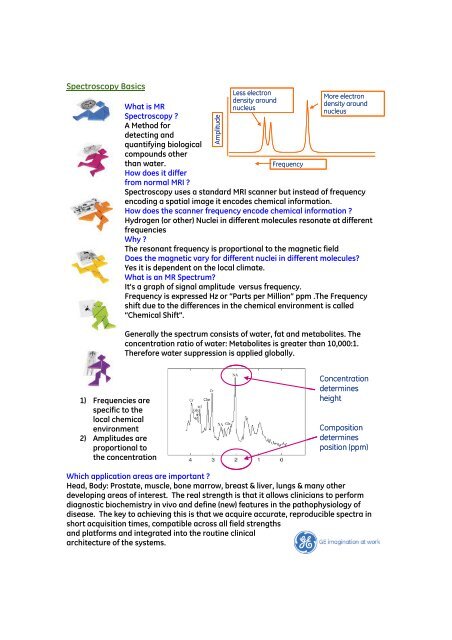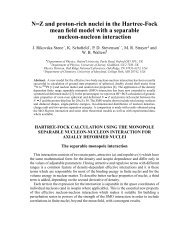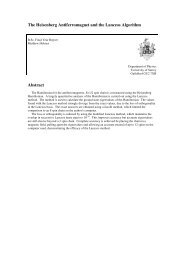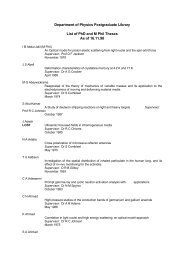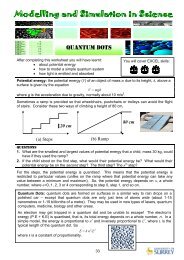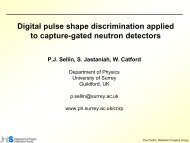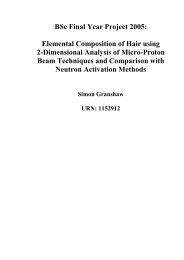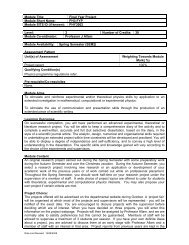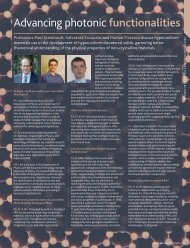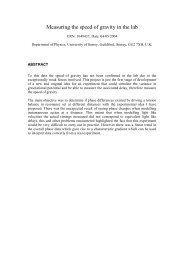Proceedings of the meeting - Department of Physics - University of ...
Proceedings of the meeting - Department of Physics - University of ...
Proceedings of the meeting - Department of Physics - University of ...
You also want an ePaper? Increase the reach of your titles
YUMPU automatically turns print PDFs into web optimized ePapers that Google loves.
Spectroscopy BasicsWhat is MRSpectroscopy ?A Method fordetecting andquantifying biologicalcompounds o<strong>the</strong>rthan water.How does it differfrom normal MRI ?AmplitudeLess electrondensity aroundnucleusFrequencyMore electrondensity aroundnucleusSpectroscopy uses a standard MRI scanner but instead <strong>of</strong> frequencyencoding a spatial image it encodes chemical information.How does <strong>the</strong> scanner frequency encode chemical information ?Hydrogen (or o<strong>the</strong>r) Nuclei in different molecules resonate at differentfrequenciesWhy ?The resonant frequency is proportional to <strong>the</strong> magnetic fieldDoes <strong>the</strong> magnetic vary for different nuclei in different molecules?Yes it is dependent on <strong>the</strong> local climate.What is an MR Spectrum?It’s a graph <strong>of</strong> signal amplitude versus frequency.Frequency is expressed Hz or “Parts per Million” ppm .The Frequencyshift due to <strong>the</strong> differences in <strong>the</strong> chemical environment is called“Chemical Shift”.Generally <strong>the</strong> spectrum consists <strong>of</strong> water, fat and metabolites. Theconcentration ratio <strong>of</strong> water: Metabolites is greater than 10,000:1.Therefore water suppression is applied globally.1) Frequencies arespecific to <strong>the</strong>local chemicalenvironment2) Amplitudes areproportional to<strong>the</strong> concentrationConcentrationdeterminesheightCompositiondeterminesposition (ppm)Which application areas are important ?Head, Body: Prostate, muscle, bone marrow, breast & liver, lungs & many o<strong>the</strong>rdeveloping areas <strong>of</strong> interest. The real strength is that it allows clinicians to performdiagnostic biochemistry in vivo and define (new) features in <strong>the</strong> pathophysiology <strong>of</strong>disease. The key to achieving this is that we acquire accurate, reproducible spectra inshort acquisition times, compatible across all field strengthsand platforms and integrated into <strong>the</strong> routine clinicalarchitecture <strong>of</strong> <strong>the</strong> systems.


